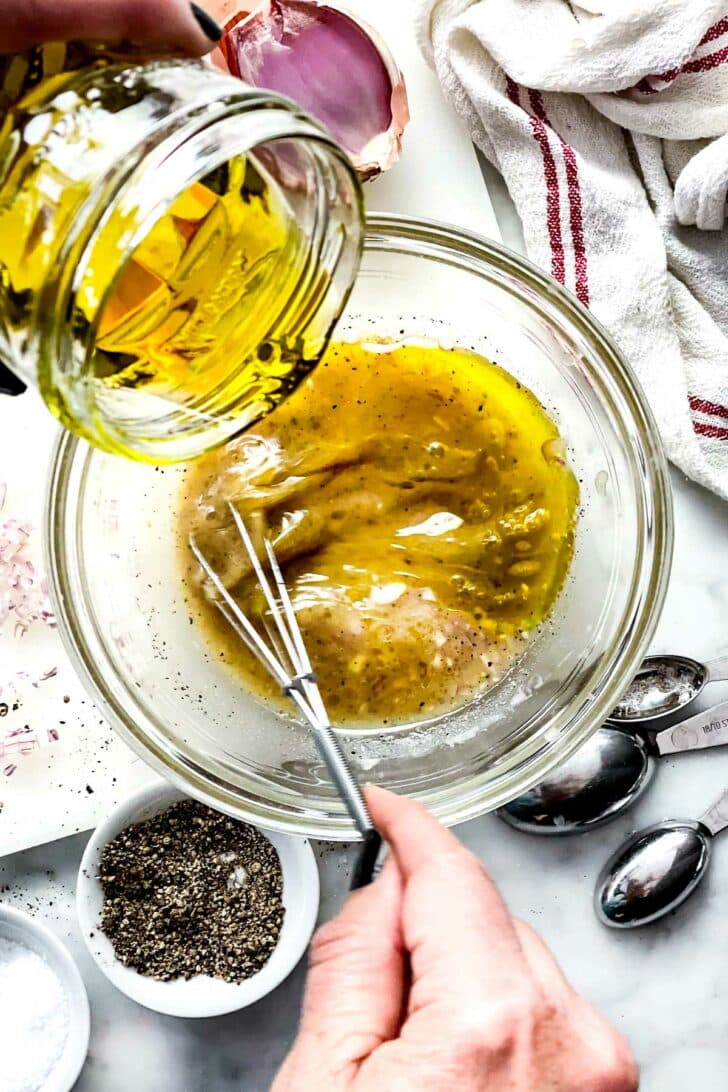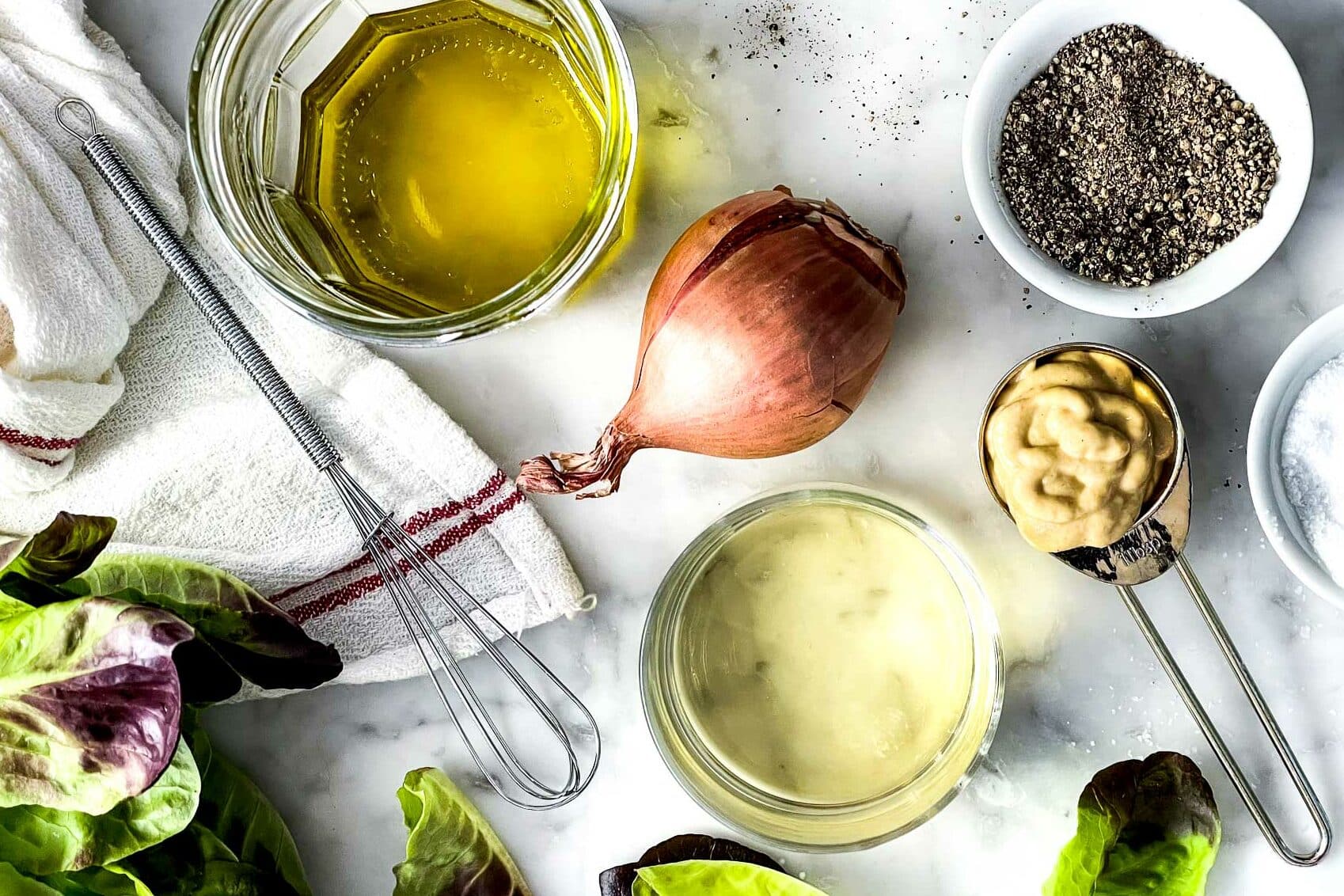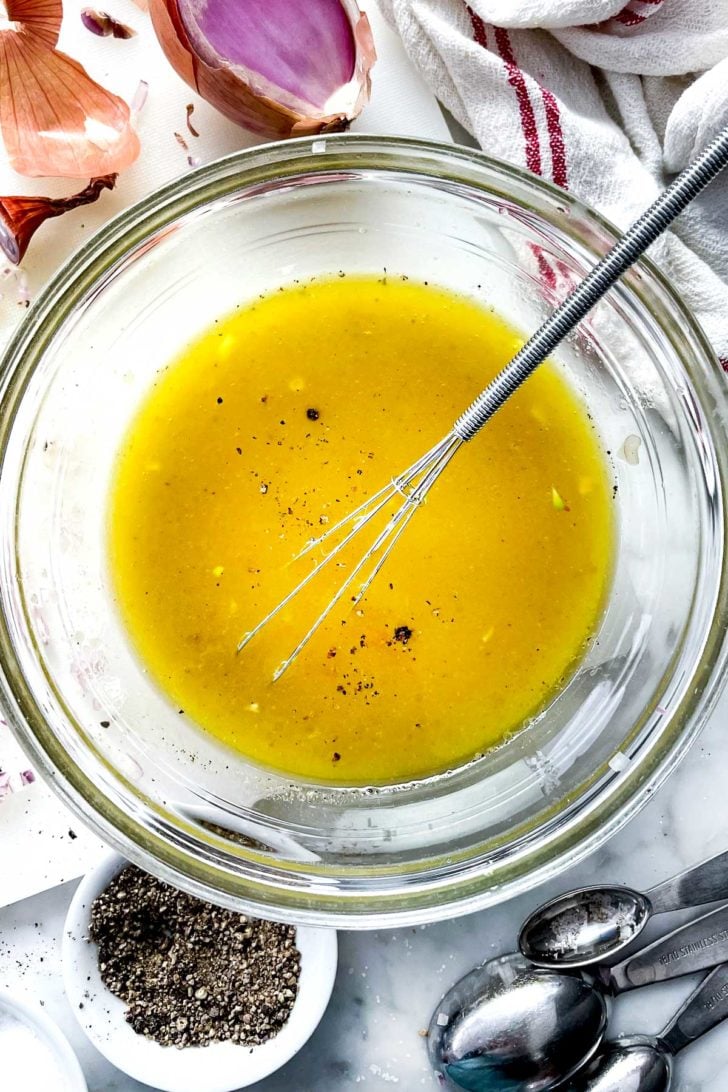This easy Dijon vinaigrette dressing with minced shallots gives any salad a classically tangy French vibe.

Home cooks have been duped into thinking salad dressings and vinaigrettes should come from your grocery store shelves. Don’t believe the hype! The truth is, homemade salad dressings like this simple Dijon vinaigrette just might be the biggest bang-for-your recipe you’ll ever learn to make from scratch. And without all those fillers and additives, it’s so much healthier for you too. What I love about homemade dressings and vinaigrettes like my Greek salad dressing, balsamic vinaigrette, and Caesar dressing, is they’re so much healthier than store-bought varieties and they’re an easy way to upgrade any salad.
In This Post
Why You’ll Love It
- It’s super quick and easy to make
- You can make this creamy Dijon vinaigrette with pantry staples
- The flavors are versatile, making it a great candidate for most salads
Want more? Check out my 12 vinaigrette and salad dressing recipes post

What is Dijon Dressing Made of
The most elemental vinaigrette salad dressing is composed of just two things:
- An acid, typically vinegar or citrus juice gives the dressing its tang
and… - An emulsifier thickens the dressing, typically olive oil or a neutral-flavored oil like canola, grapeseed, or avocado oil. Avoid heavy peanut oil, which is best left for fried chicken.
Here’s what’s in this Dijon vinaigrette:
- Seasoned or unseasoned rice vinegar—(seasoned has a bit of sugar added for sweetness), or try another clear vinegar like champagne or white wine vinegar
- Dijon mustard—adds tang and helps thicken the dressing
- Shallot—minced shallots add a bit of heat and spice and are a signature French influence
- Extra virgin olive oil—(neutral oils like canola, grapeseed, or avocado oil will work here too.)
- Kosher salt and freshly ground black pepper—as always, for flavor
Find the complete recipe with measurements below.

How to Make This Dijon Vinaigrette
- Choose your vessel: Whisk the dressing in a bowl or shake it in a jar with a lid. Both methods work well, but I get a thicker, more emulsified dressing when I slowly whisk the oil into the vinegar and mustard instead of shaking all at once.
- Add the Dijon, minced shallots, and vinegar before adding the oil. The acid from the mustard and vinegar mellows the heat of the shallots but still retains that French bistro vibe.
- Mix the dressing. While whisking, slowly drizzle the olive oil into the ingredients until thickened and full-bodied. Or, make this dressing super easy by adding everything at once to a glass jar, screwing tight with a lid, and shaking to emulsify. Season with kosher salt and freshly ground black pepper.
TIP: If your shallots are exceptionally strong, let them sit for about 10 minutes in the vinegar and mustard to neutralize some of the heat before adding the oil.

FAQ and Variations
- Should Dijon vinaigrette be refrigerated? Yes. You can make this dressing up to 2 weeks in advance, refrigerate, then bring it to room temperature before using. It’s also delicious drizzled on cooked vegetables or as a quick marinade for chicken.
- What’s the difference between vinaigrette and balsamic? Balsamic is a type of vinegar and it’s great for a dressing or vinaigrette, like in my recipe for balsamic vinaigrette. Vinaigrette is a mixture of oil and an acid, usually with salt and pepper, and sometimes Dijon mustard, garlic, shallot, and/or other spices.
- Swap the rice vinegar for white balsamic, champagne vinegar, apple cider vinegar, sherry vinegar, or red wine vinegar
- Add fresh herbs, such as thyme or basil
- If you want a touch of sweetness, add a bit of honey, agave, or maple syrup
If you make this recipe, please let me know! Leave a ⭐️⭐️⭐️⭐️⭐️ rating on this recipe below and leave a comment
How to Make The Best Dijon Vinaigrette Dressing
Ingredients
- ⅓ cup rice vinegar seasoned or unseasoned
- 1 tablespoon minced shallot
- 1 tablespoon Dijon mustard
- ½ cup extra virgin olive oil
- ½ teaspoon kosher salt
- ½ teaspoon freshly ground black pepper
Instructions
- This dressing can be made in a small bowl or a jar fitted with a lid. To make in the bowl, add the vinegar, shallots, and Dijon mustard then slowly drizzle the olive oil into the mix while whisking continuously until emulsified. Season with kosher salt and pepper, adding more to taste. Or, add all of the ingredients to the jar, close the lid tightly, and shake well. Refrigerate for up to 2 weeks and bring to room temperature before serving.






